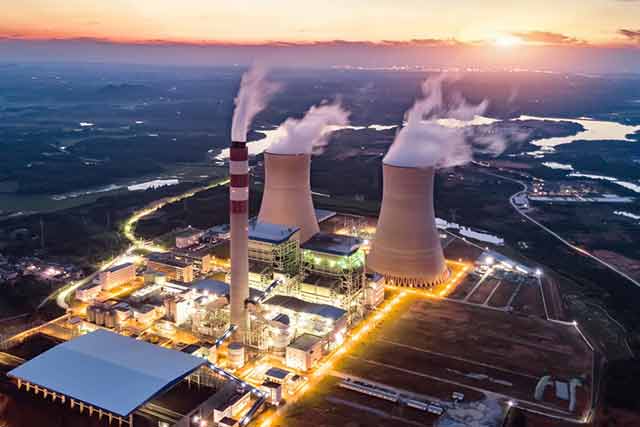Electricity generation companies (GENCOs) are currently in the throes of a transition. There is ample availability of renewable energy (RE), and that too at a price cheaper than that charged by conventional power plants. Therefore, power demand from distribution companies (DISCOMs) is shifting from coal-based thermal power plants to RE power plants. Additionally, DISCOMs are signing power purchase agreements (PPAs) with upcoming low-cost RE generators to reduce their average power purchase cost leading to the backing-down or shutting down of thermal assets.
In Karnataka, the situation is much more precarious for conventional power plants. The state has a significant installed RE capacity. It has attained its annual solar capacity target, and is compliant of annual renewable purchase obligation (RPO) targets. A reduced demand from DISCOMs for conventional power will result in the poor financial performance of state thermal power plants (TPPs) in the long run.
Changing Dynamics
Independent power producers and central generating stations have alternative business models to deal with such circumstances. Most GENCOs share power with multiple state DISCOMs and buyers. For instance, NTPC’s thermal plants in Karnataka provide power to nearby states. They usually sign both long and short-term contracts to secure the demand for available power. However, the state-owned TPPs in Karnataka have mainly signed long-term contracts of up to 25 years covering their lifetime with the state DISCOMs. Initially, these long-term contracts were considered beneficial as they helped the power plants secure the value of the signed PPA tariff for the contracted years even when the cost of electricity generation fell.
However, the recent infusion of RE into the market changed the dynamics. Because of existing agreements, state TPPs lost out on the opportunities to explore other options of energy sales. This has contributed to the continuous reduction in their average annual plant load factor (PLF) from 72 per cent in 2014-15 to 37 per cent in 2019-20.
Meanwhile, the costs incurred by state GENCOs in building TPPs needs to be recovered on an annual basis from contracted buyers, even when electricity is not purchased. This makes the average per unit tariff of these TPPs higher, while RE remains cheaper as there is no variable cost component associated with it. At low PLF, per unit (kWh) variable cost (operating cost) also increases. The State Load Despatch Centre (SLDC) prepares the priority list for power despatch based on the variable costs of all power plants in the state. The power from conventional state-owned power plants gets low priority in scheduling as it is expensive, leading to significant thermal capacity going idle.
Open Access Revenue Model
Though the Electricity Act 2003 promotes open access (OA) trade, allowing for sale of excess electricity in open market, state GENCOs have not explored it yet. Generation companies with lower operating PLFs should utilise their idle power capacity to generate excess power and sell it in the OA market. For this, state-owned GENCOs need to revisit their existing long-term PPAs with DISCOMs. Based on the present and projected power demand from DISCOMs, the allotted plant capacity can be reduced. This will result in a win-win situation for both utilities as the fixed cost burden reduces for DISCOMs and the spare generating capacity of GENCOs can be contracted under the OA market for specific end consumers. The additional revenue earned thus can make GENCOs economically viable in the long run.
Ongoing research by the Center for Study of Science, Technology and Policy (CSTEP) has identified energy-intensive industries in Karnataka that may purchase power through OA. Steel–iron, cement, textile, pulp–paper, and fertilisers have a cumulative annual average demand of over 1,000 MW. State-owned TPPs can provide electricity to these industrial consumers through OA. The research shows that eliminating the operational participation of DISCOMs in the trade will bring down the OA tariff to industrial consumers by 25 per cent.
RE Transition
Considering the increasing investments, ambitious national RE targets, and attractive government policies, RE capacity is set to increase significantly in Karnataka. It is anticipated that OA tariffs from thermal power plants shall also be challenged by solar power tariffs. A substantial segment of the high-demand consumers is already moving towards RE-based OA contracting. Given this, it will be worthwhile for state GENCOs to consider transitioning to RE.
Karnataka state GENCOs have more than 50 years of experience in utility-scale power generation and expertise in sub-optimal operations of power plants. They should explore thermal–RE bundling, which is an inter-connected power generation system where both thermal plants and RE plants complement each other. The Ministry of Power (MoP) recently released guidelines to promote round-the-clock power trade through thermal–RE bundling projects. This provision offers GENCOs an opportunity to transition into RE-generation companies. It will also help them manage losses on account of TPPs, while optimising PLF. The RE transition will help Karnataka utilise its thermal and renewable power capacities optimally, leading to the financial strengthening of all state utilities.



































